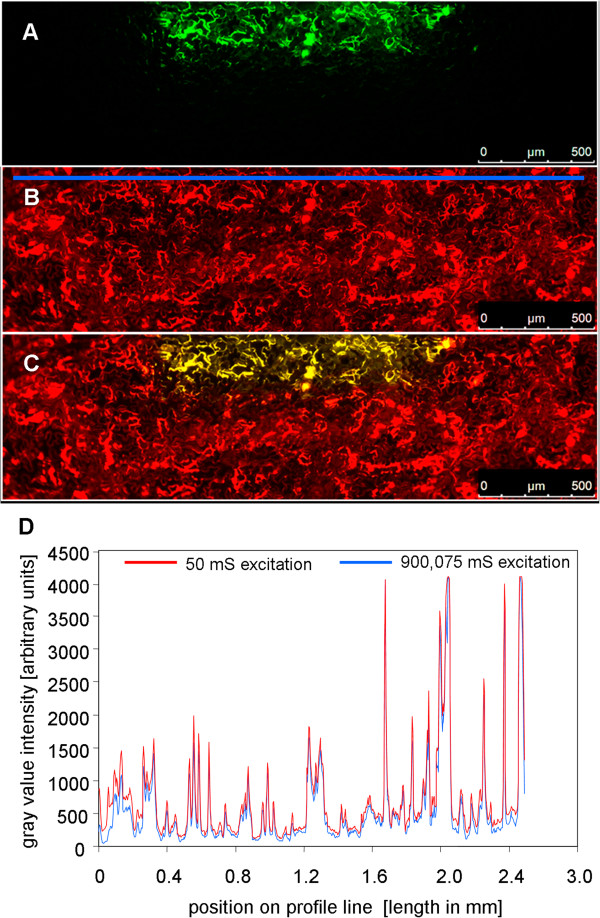Figure 4.

Pt -GFP is photostable. (A) The leaf apoplast of Vicia faba was loaded with Pt-GFP. To test whether Pt-GFP is prone to bleaching, a selected area (pseudo-green) was designated to be continuously excited by 490 nm illumination over a period of 15 min (=900,000 ms). The outer edges of the specimen were protected against continuous illumination by foreclosing the field diaphragm (non-bleached are appears black). Prior bleaching was started, initial signal intensity of the specimen was documented (image not shown). (B) After 900,000 ms continuous excitation, the field diaphragm was opened for collecting an image at ex 490 nm (exposure time was 25 mS). The image is presented in pseudo-red and contains the part of the specimen that was continuously illuminated (in total 3*25 ms illumination from three image acquisitions plus 900,000 ms from bleaching treatment) plus the area of the specimen that was not bleached (exposed in total to 2*25 ms illumination from two acquisitions). (C) Merged overlay of (A) and (B). The yellow area (mixing pseudo-red and pseudo-green yields orange) represents the part that was continuously exposed to light treatment (in total 900,075 ms) and, thus, contains the possibly bleached proteins. Pseudo-red area represents the non-bleached part of the leaf with only 50 ms illumination in total (due to image acquisition cycles). Image (B) was used to create a profile of the emission intensity values from the area tagged by the blue line as a measure for the photostability. This line covers the bleached and non-bleached areas. The intensity values are presented in (D). A comparison of the intensity values derived from the bleached and non-bleached areas revealed that no significant bleaching occurred after 15 min of continuous illumination. Eight separate bleaching experiments proved photostability of Pt-GFP.
